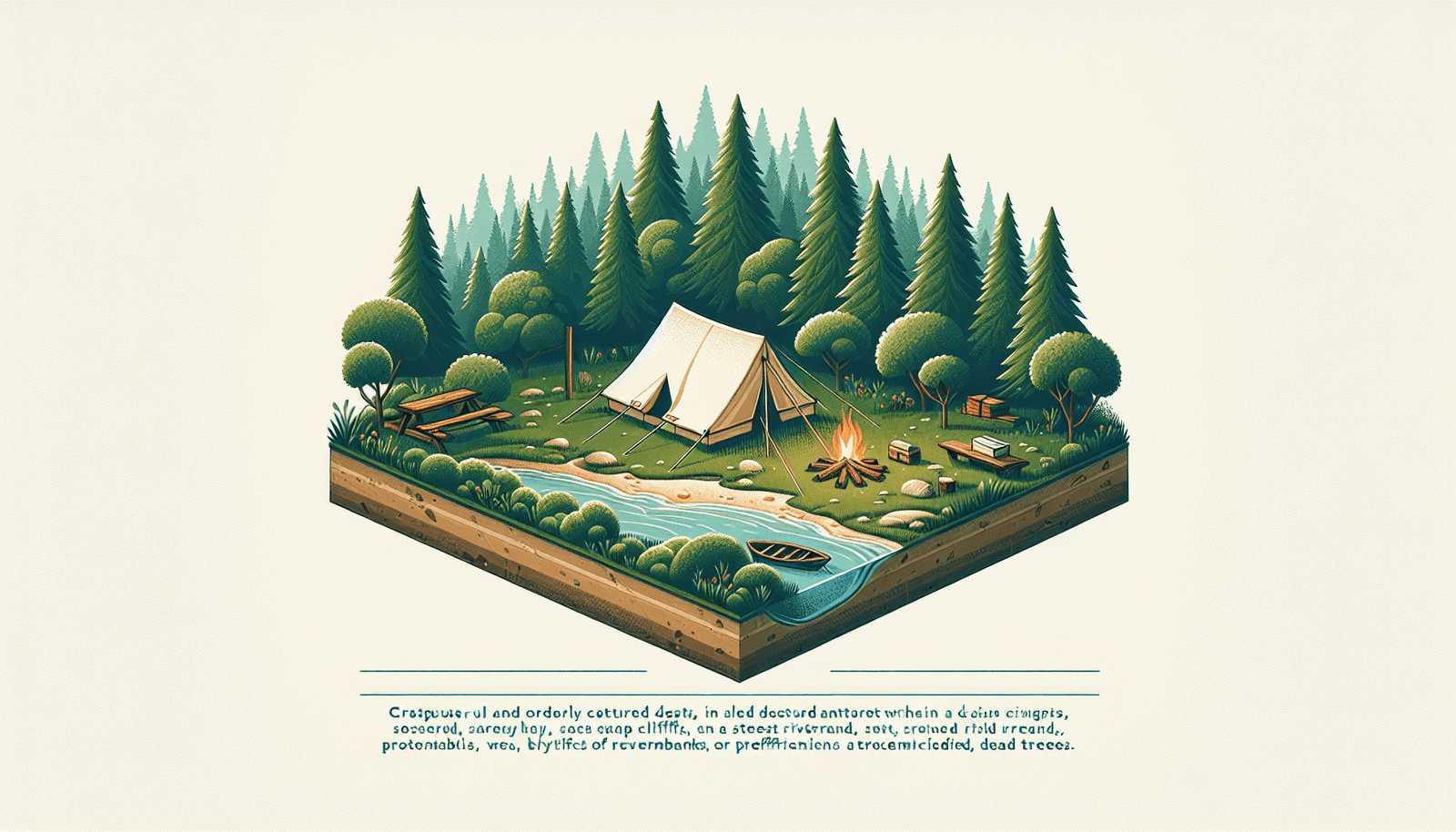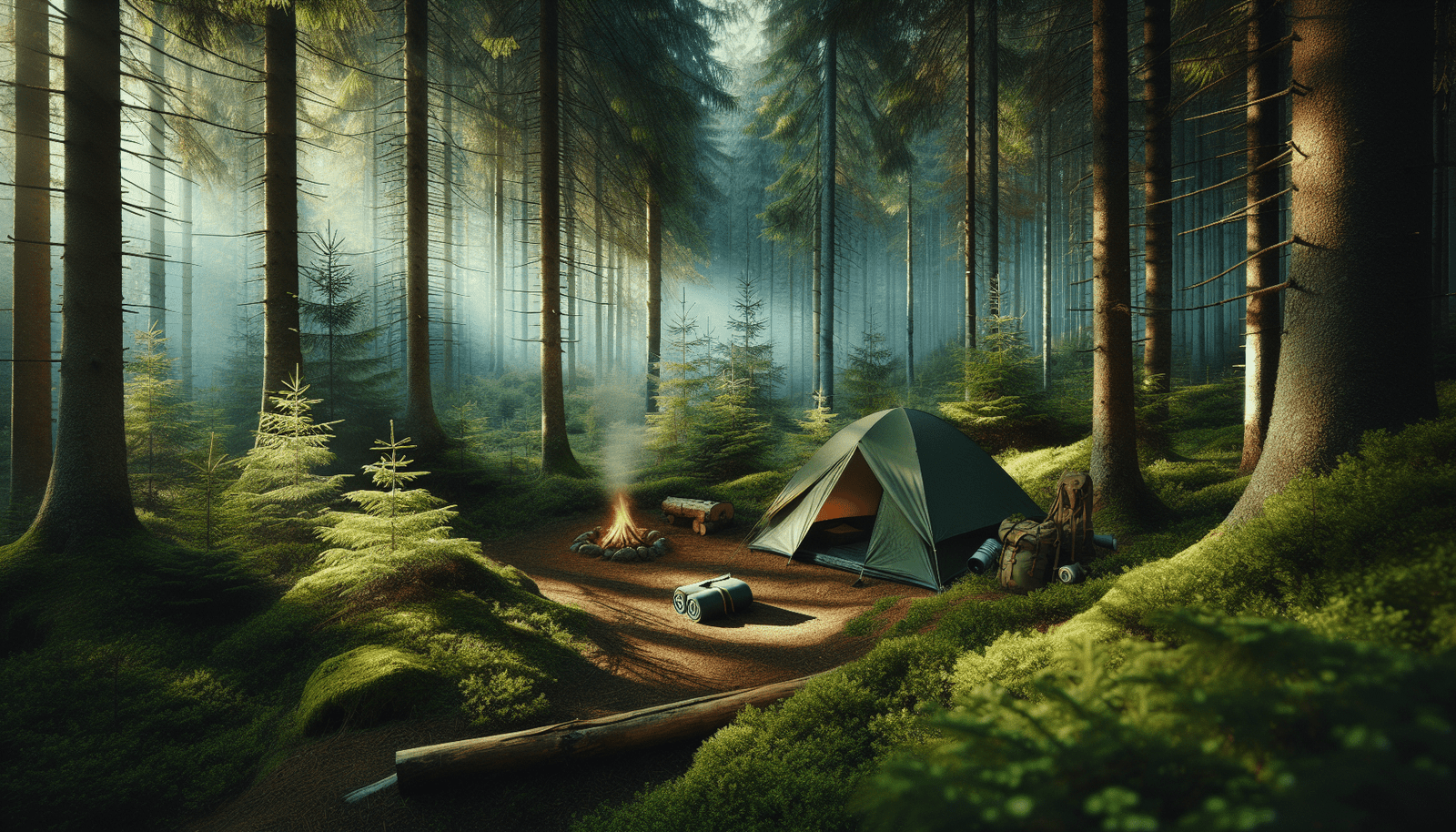If you’re planning a camping trip and safety is on your mind, you’re in the right place. “How Do I Pick A Safe Campsite?” is your go-to guide for ensuring your outdoor adventure is not only thrilling but also secure. You’ll discover essential tips, from choosing the right spot and understanding the terrain to checking for wildlife hazards and setting up camp with safety in mind. By the end, you’ll feel confident in your ability to pick a campsite where you can relax and enjoy nature without worry.
How Do I Pick A Safe Campsite?
Have you ever found yourself excited about an upcoming camping trip but a bit overwhelmed by the task of selecting the perfect—and safe—campsite? You’re not alone! Many outdoor enthusiasts, whether seasoned or novices, grapple with this crucial decision. After all, the quality and safety of your campsite can make or break your outdoor adventure. In this guide, we’ll be covering all you need to know to ensure you pick a safe campsite. Let’s dive in!

The Importance of Location: Your Campsite Should Be Your Sanctuary
Selecting a spot with the right geographical and environmental conditions can mean the difference between an enjoyable camping experience and a precarious one. Here’s what you need to consider:
Proximity to Water Sources
Camping near water sources like rivers, lakes, and streams can be very advantageous. Not only do they provide you with a convenient water supply, but they also offer beautiful scenery and activities like fishing or swimming.
Tips:
- Distance: Set up at least 200 feet away from water sources to minimize the impact on local wildlife, which depend on these spots. This also reduces the risk of flooding.
- Accessibility: Ensure the terrain leading to the water source is not overly steep or slippery, which could pose a risk when fetching water.
Assessing Terrain and Ground Conditions
The ground where you’ll set up your tent is equally important. Solid, level ground minimizes the risk of flooding and discomfort.
Tips:
- Flat Terrain: Choose a flat or very gently sloping area to set up your tent. This ensures comfortable sleeping and stability for your gear.
- Avoid Depressions: Low spots can collect water during rainfall, soaking your tent and belongings.
Weather Conditions and Natural Disasters
Different terrains carry unique risks depending on the weather. For example, camping in mountainous or heavily forested areas requires certain considerations during stormy seasons.
Tips:
- Check Forecasts: Always check the weather forecast for your camping period and location.
- Understand Local Hazards: Be aware of any local natural hazards such as flash floods in canyons or landslides in mountain areas.
Safety First: Evaluate Potential Hazards
When evaluating a potential campsite, it’s essential to be vigilant about possible hazards. From wildlife to falling trees, knowing what to look for can keep you and your group safe.
Wildlife Considerations
While encountering wildlife can be thrilling, you want to ensure that these encounters are safe and on your terms.
Tips:
- Research: Learn about the wildlife in the area, including potential dangerous animals like bears, snakes, and insects.
- Proper Storage: Always store food and scented items in bear-proof containers or hang them high up in trees. These steps reduce the likelihood of attracting animals to your campsite.
Assess Natural Surroundings
Keeping an eye out for natural hazards can save you a lot of trouble down the line.
Tips:
- Dead Trees and Branches: Avoid setting up camp under dead trees or branches, as these can fall unexpectedly.
- Geological Hazards: Be attentive to loose rocks on slopes or cliffs above your campsite that might fall.
Human Factors
Safety isn’t just about the natural elements. Sometimes the presence or actions of other people can be a factor too.
Tips:
- Distance from Other Camps: Opt for some distance from other groups to prevent noise disturbance and potential conflicts.
- Shared Facilities: If you’re at a formal campsite, be aware of the location of communal facilities like restrooms to ensure they’re convenient but not disruptive.
Hygiene and Health: Ensuring Your Well-being
Your health and well-being are paramount when out in the wilderness. Your campsite should have considerations for maintaining good hygiene.
Sanitation Setup
Proper sanitation is crucial to prevent the spread of disease and maintain a pleasant camping environment.
Tips:
- Safe Distance: Set up restroom areas at least 200 feet away from water sources and your sleeping area.
- Digging Latrines: If formal toilets are unavailable, dig a latrine at least 6 inches deep and cover it when done.
Clean Drinking Water
Waterborne illnesses can quickly ruin a camping trip, so it’s essential to ensure your water supply is safe.
Tips:
- Filtration Systems: Use reliable water filtration systems to filter water from natural sources.
- Boiling: Boil water for at least one minute to kill most pathogens.
Waste Disposal
Improper waste disposal can attract animals and contaminate water sources, posing significant risks.
Tips:
- Carry Out Trash: Always bring enough bags to carry your trash out with you. Never leave it behind.
- Avoid Burning Waste: While it might seem convenient, burning trash can release harmful chemicals and doesn’t fully eliminate waste.
Comfort and Convenience: Making Your Campsite Habitable
While safety is paramount, comfort, and convenience should not be overlooked either. A few simple considerations can significantly enhance your camping experience.
Choosing the Best Tent Layout
The arrangement of your tent and other camping gear can significantly affect both comfort and safety.
Tips:
- Sleeping Areas: Position your sleeping area on higher ground if the terrain allows, to prevent water from pooling during rain.
- Cooking Area: Keep cooking areas downwind and at least 200 feet away from your sleeping area.
Light and Heat Sources
Adequate lighting and heat are crucial for a comfortable and safe camping experience, especially at night.
Tips:
- Campfires: Build campfires in designated fire pits if available. Clear the surrounding area of flammable material.
- Lanterns and Flashlights: Bring plenty of portable light sources, including extra batteries or solar-powered options.
Proximity to Trails and Paths
While being near a trail can be convenient, you also want to maintain a balance to avoid constant foot traffic disturbing your peace.
Tips:
- Set Back: Position your campsite a short distance off trails to maintain your group’s privacy.
- Low-Impact Paths: Use established paths to reduce your impact on the environment.

Emergency Preparedness: Planning for the Unexpected
Even with the best planning, emergencies can arise. Being prepared can make all the difference.
First Aid Kit
A well-stocked first aid kit is a must for any camping trip.
Tips:
- Contents: Ensure your kit includes items like bandages, antiseptic wipes, tweezers, scissors, medications, and a first-aid manual.
- Accessibility: Keep your first aid kit in an easily accessible location.
Communication Tools
Effective communication tools can be vital, especially in remote areas with no cell service.
Tips:
- Radios: Consider bringing a hand-crank or battery-powered two-way radio.
- Signal Devices: Flares, whistles, and mirrors can help you signal for help if needed.
Knowledge and Skills
Basic knowledge and skills can empower you to handle emergencies competently.
Tips:
- First Aid Training: Consider taking a first aid and CPR course.
- Survival Skills: Basic skills such as fire-starting, building shelter, and navigation can be invaluable.
Practical Tips for Choosing Safe and Ideal Campsites
Choosing a campsite involves a balance of various factors. Here are some practical tips to ensure you make the best choice possible.
Campsite Checklist
Creating a checklist can help you remember all the essential considerations.
| Criteria | Details | Importance |
|---|---|---|
| Water Source | At least 200 feet away; easy access | High |
| Terrain | Flat, no depressions, non-rocky | High |
| Wildlife Presence | Research local wildlife, secure food storage | High |
| Natural Hazards | No dead trees or branches, clear slope or cliff areas | High |
| Sanitation Facilities | Proper sanitation setup, latrine at least 6 inches deep | High |
| Waste Disposal | Carry out trash, avoid burning waste | High |
| Proximity to Trails | Not too close to avoid disturbance | Medium |
| Light and Heat Sources | Adequate lighting, safe campfire setup | Medium |
| Communication Tools | Radios, signal devices | High |
| First Aid Kit | Well-stocked, easily accessible | High |
Final Evaluation
Before finally setting up camp, do a thorough check of the area.
Tips:
- Walk the Perimeter: Walk around the area to check for any hazards you might have missed initially.
- Sit and Listen: Spend a few minutes sitting quietly to listen for any unexpected sounds like flowing water, animals, or human activity that might influence your choice.
Learning from Experiences
Sometimes the best lessons come from experience. Maintain a journal or log of your trips to help you remember what worked and what didn’t for future outings.
Tips:
- Reflect on Past Trips: Identify what locations were ideal and why.
- Learn from Others: Talk to other campers or read reviews of specific sites for additional insights.
Final Thoughts
Selecting a safe campsite is a multifaceted task that involves attention to various factors, from the terrain to potential hazards and convenience. Remember that a safe campsite enhances your overall camping experience, making it more relaxed and enjoyable. Paying attention to the finer details, being prepared, and learning from each camping venture will make you adept at picking the perfect spot. So, pack your bags and embark on your next adventure with confidence, knowing you have the knowledge to choose a safe and comfortable campsite. Happy camping!
